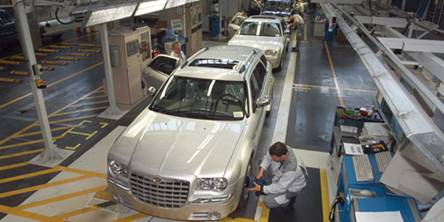Lean Production
Lean Production originates from the production established by Toyota in Japan in the early 1950's that became known as 'The Toyota Production System'.
Lean production is a philosophy that aims to produce more, using fewer resources, eliminating all forms of waste.
The components of lean production are:
- Just-in-time manufacture (JIT)
- Total quality management (TQM)
- Time-based management
Lean production came out of a three-month visit by Toyota managers to the Ford River Rouge plant in the 1950s. Here they studied mass production and concluded:
- Mass production was riddled with waste ('muda')
- The standardisation required was unacceptable to customers
- Quality was poor with a high reject rate at the end of the production line
 Toyota's solution was to design machines that were flexible, adapted to several processes. Lines could be quickly altered to manufacture different products, e.g. left to right hand drive vehicles. The emphasis was on reducing the use of all resources: raw materials, manpower, capital, floor space and time.
Toyota's solution was to design machines that were flexible, adapted to several processes. Lines could be quickly altered to manufacture different products, e.g. left to right hand drive vehicles. The emphasis was on reducing the use of all resources: raw materials, manpower, capital, floor space and time.
In the 1980s, there was a significant increase in the application of lean production techniques in US and European firms and the term was popularised by MIT researchers, J. P. Womack and D. T. Jones, in their book 'The Machine that Changed the World', based on their five-year, fourteen-country International Motor Vehicle Program's study of the worldwide auto industry.
Lean Production combines the advantages of both craft and mass production, but with the goal is to use less of everything compared with mass production. Lean production aims to:
'get the right things to the right place at the right time, the first time, while minimising waste and being open to change'.
Lean Production focused on reducing system response time so that the production system can adapting quickly to market demands, effectively meaning products become virtually made-to-order.
Follow the link below if you would prefer to view this interaction in a new web window:
Quality improvement
Quality is not static and firms need to ensure that their quality improves with the demands of the customer and the market. Quality is both a company absolute value and an industry/market relative value (one firm compared to another).
